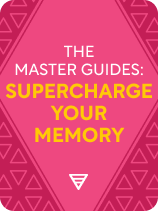

This article is an excerpt from the Shortform book guide to "The Master Guides: Supercharge Your Memory" by Shortform. Shortform has the world's best summaries and analyses of books you should be reading.
Like this article? Sign up for a free trial here.
What is the best memory retention method? Can the spaced repetition technique improve your memory retrieval?
The spaced repetition technique involves giving your brain time between repetitions of information instead of repeating information many times in a short period. This improves the chances that you will commit the information to long-term memory, where rote memorization tends to rely only on short-term memory.
Learn how to use the spaced repetition technique to enhance your studying practice.
What Is the Spaced Repetition Technique?
Your brain remembers information best by engaging with it repeatedly over time—this memory retention method is called “spaced repetition.” The more time that passes after you learn something, the more information you forget. The key to overcoming this is to review the information again right before you’re about to forget it. Keep doing this each time you feel you’re close to forgetting the material. Each time you review it, you’ll be able to remember the information for longer, eventually fully ingraining it into your long-term memory.
Novelist and former management consultant Peter C. Brown and cognitive scientists Henry Roediger and Mark McDaniel (Make It Stick) offer additional insights on the benefits of the spaced repetition technique. Instead of focusing on one skill or topic at a time—a strategy called massed practice—spaced practice gives your brain the time it needs to strengthen new knowledge and store it in your long-term memory through a process called consolidation.
Here are two ways to practice the spaced repetition technique and improve your memory-retrieval skills:
1) Diversify Your Studies
The first memory retention method is to diversify your studies among multiple related topics or skills. For example, if you’re learning how to calculate volumes of different geometric shapes, mix up the problems—doing a sphere problem, then a cube problem, then another sphere problem—instead of grouping your practice problems by shape. Brown, Roediger, and McDaniel explain that diversifying in this way helps you make mental connections to the other subjects you mix in. They stress that the key to this approach is to switch to the next skill or concept before you’ve finished practicing one. It feels frustrating to switch gears before you’re ready, but this spaced repetition technique improves your long-term retention.
Other experts also recommend this memory retention method because, just like taking a multisensory approach or making up metaphors, diversifying your studies helps you learn the material better by connecting what you’re learning to more neural pathways and building more synapse connections.
2) Study in a Variety of Locations
The second spaced repetition technique is studying in a variety of locations. When you only study a certain subject in a single place, your brain may make neural connections between that subject and that place. These connections make it harder to recall what you studied when you’re in a different setting (for example, if you only ever study in your bedroom, you might struggle to recall the information at a testing center). By studying a subject in a variety of environments, you ensure your brain doesn’t associate the subject with any particular environment—meaning you’ll be able to recall the information no matter where you are rather than only remembering it when you’re in a certain place.
In addition to studying in different locations, Brown, Roediger, and McDaniel suggest that you apply what you’re trying to memorize in different contexts. Doing so enhances your understanding of the underlying patterns and encourages your brain to think quickly and fluidly. For example, if you’re memorizing Spanish phrases, try ordering food at a Spanish restaurant, watching Spanish movies, or chatting with native speakers in different social settings. Each context will force your brain to adapt and apply the language in unique ways, solidifying your understanding and recall.

———End of Preview———
Like what you just read? Read the rest of the world's best book summary and analysis of Shortform's "The Master Guides: Supercharge Your Memory" at Shortform.
Here's what you'll find in our full The Master Guides: Supercharge Your Memory summary:
- Memory retention methods from a diverse group of experts
- Three techniques for enhancing your note-taking abilities
- Three active learning strategies to help you solidify your long-term memory






